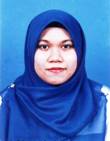
Fatin Hamimi Mustafa
Universiti Sains Malaysia MalaysiaTitle: Near infrared spectroscopy to monitor disease-related to adipose fat underneath skin.
Abstract:
The amount of adipose fat in neonates indicates their nutritional status. Low body fat has been shown that the neonates experienced undernutrition. Undernutrition can cause sudden death and morbidity in neonates’ later life, which occurs mostly in the developing countries. The gold standard body fat measurement, which is air-displacement-plethysmography (ADP) is very expensive and cannot be afforded by low-middle income settings. In this project, near infrared spectroscopy (NIRS) is used to measure the amount of adipose fat underneath skin. The first stage utilising Monte Carlo simulation method to determine optimal wavelengths and to solve a major limitation of NIRS which is high absorption due to water in the skin. The finding showed that the optimal wavelengths ranges were from 890 to 940 nm and from 1010 to 1100 nm. Next was optimization of near infrared source-detector configuration by ex-vivo phantom experiment using beef fat. The results demonstrated that 45-degree source-detector arrangement obtained higher sensitivity compared to 90-degree. In clinical study, 52 neonates were selected for NIRS measurements on tight skin with the used of the optimal wavelengths and the best source-detector arrangement as obtained above. The similar samples (neonates) also were measured using the ADP. From the clinical measurements, a body fat equation model of NIRS was developed and the correlation between NIRS and ADP exhibited above 0.85. The high correlation with the gold standard method showed the potential of NIRS to be a low-cost device for monitoring undernutrition in neonates.
Biography:
Fatin Hamimi Mustafa has completed her PhD in optical biosensor from the University of Sydney, Australia in 2017 with a scholarship from the Australian government. Her Master’s Degree and Bachelor’s Degree are both from Universiti Teknologi Malaysia in Electrical and Electronics Engineering. She is now a senior lecturer at Institute for Research in Molecular Medicine (INFORMM), Universiti Sains Malaysia Health Campus, Malaysia. She has published more than 14 papers in reputed journals and has been awarded national, international as well as industry grants.
